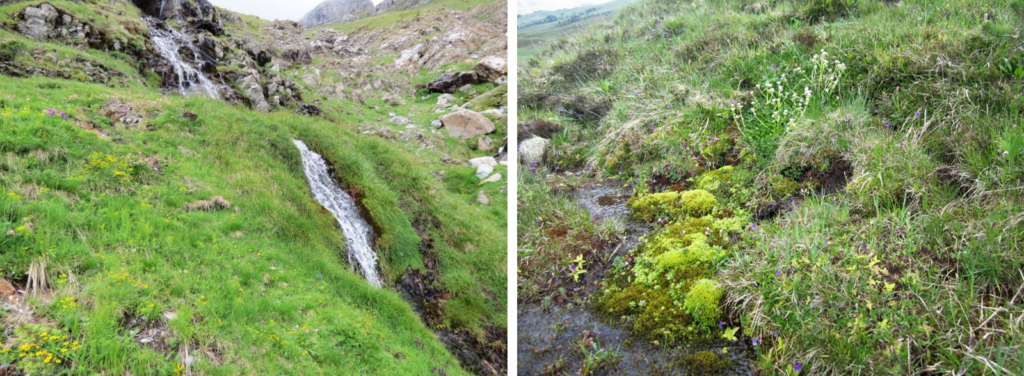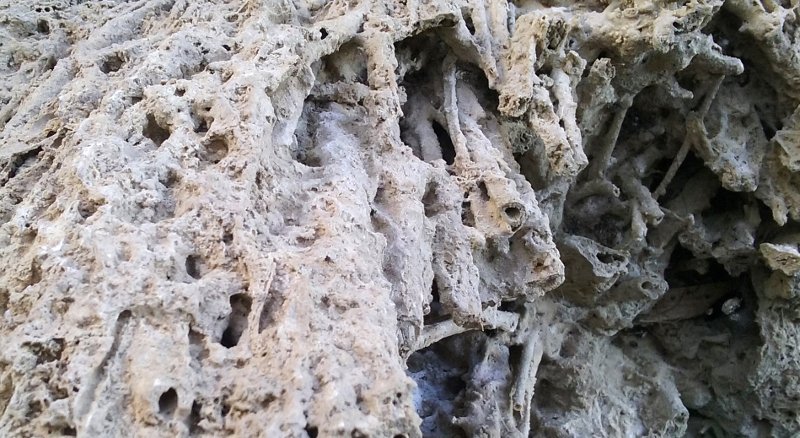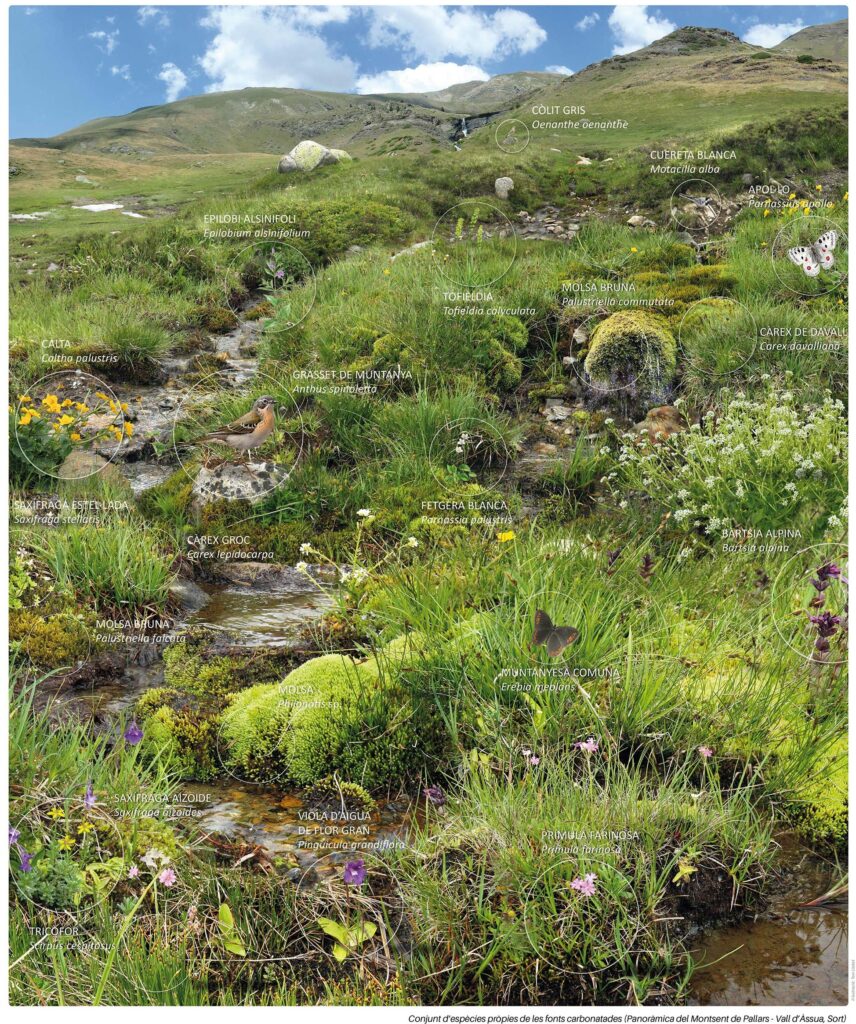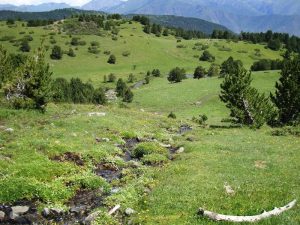In the Pyrenees, a significant part of rainwater doesn’t run on the surface but infiltrates into the soil. It slowly circulates underground until it encounters an impermeable layer or a discontinuity in the terrain, causing it to emerge again. This can happen in mass, forming springs or sources, or it can saturate the soil diffusely, creating slope fens — wetlands of great ecological importance.

In these environments, the water is often mineralized, especially rich in calcium salts. This results in a fascinating process: when the highly mineralized water flows through small waterfalls, drips, or springs, it can precipitate calcium carbonate onto the plants growing there, such as mosses, algae, and some herbs. Over time, these plants become covered by a mineral crust that slowly grows into a porous rock known as travertine.

It’s a natural process of “vegetal petrification” that creates unique landscapes.
Rare but Valuable Habitats
Carbonated springs that form travertine and calcareous wetlands are rare habitats with great value on a European scale. In the Catalan Pyrenees, we find some interesting examples, although they occupy small areas. Their importance lies both in the richness of plant species that thrive there and the rarity of such environments.
In general, their conservation status is acceptable or good, but there are pressures affecting them, particularly from livestock. Grazing is a traditional activity in these areas, but the concentration of herds — especially during dry periods — can lead to:
- Desiccation, from the capture or diversion of water.
- Ruderization, meaning the replacement of specialized vegetation by more common species due to excessive nutrients.
- Destruction of the plant cover, caused by trampling and excessive grazing.
Depending on the temperature and mineralization level of the water, different plant communities can be found. Springs and wetlands with carbonated waters have a vegetation distinct from those in softer waters, and often, in high mountain areas, you can observe differentiated patches of one type of vegetation and another in the same location.





